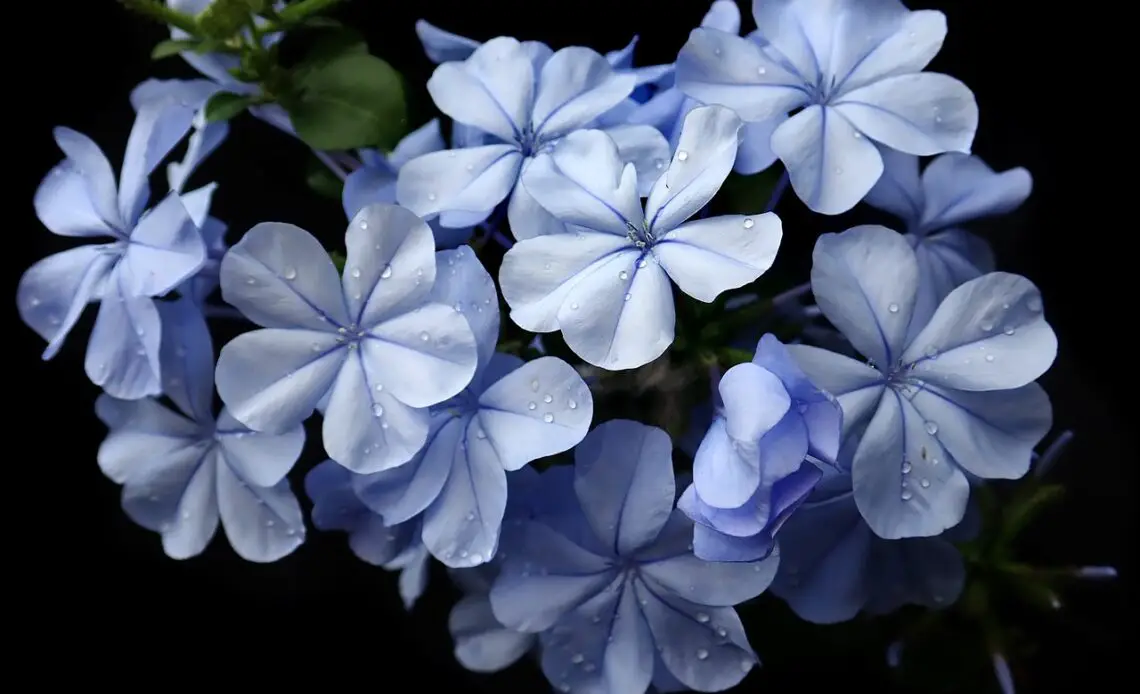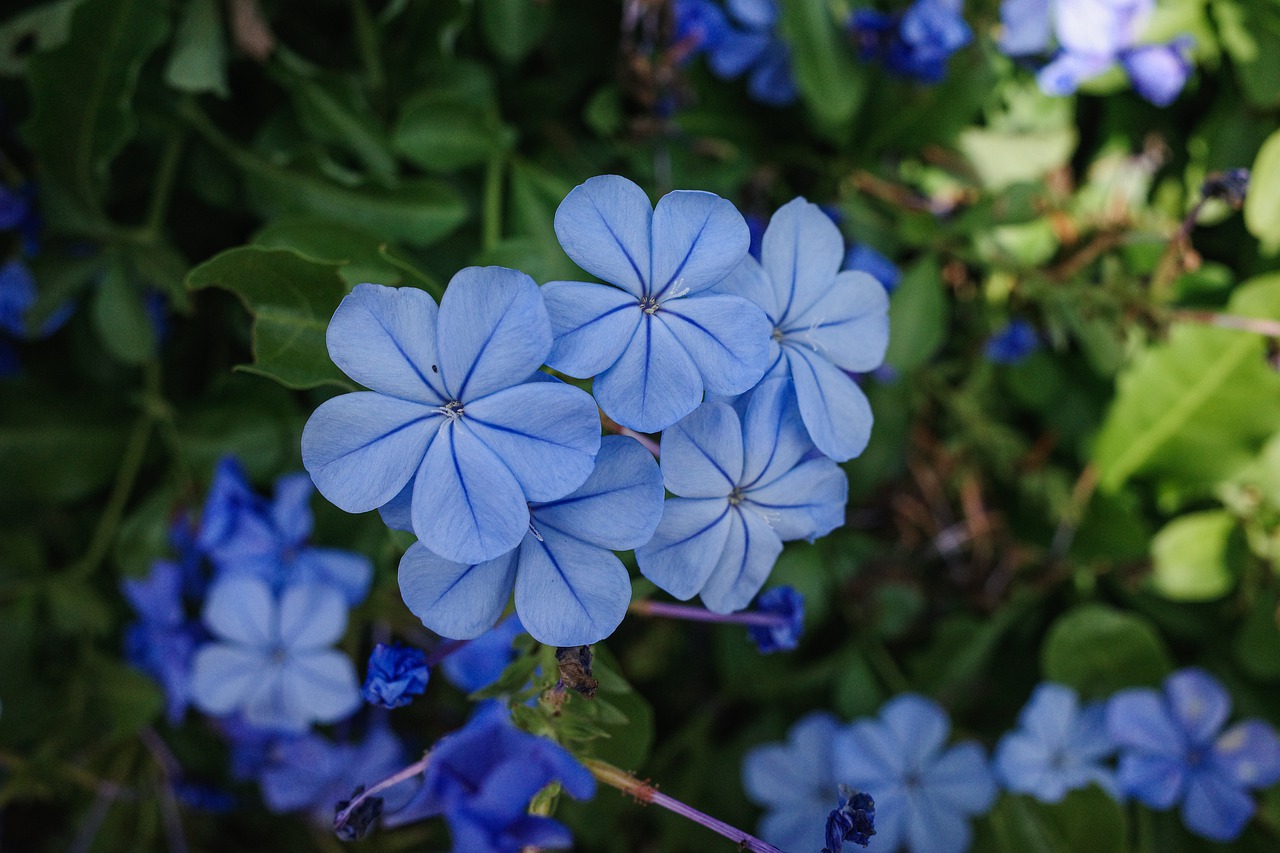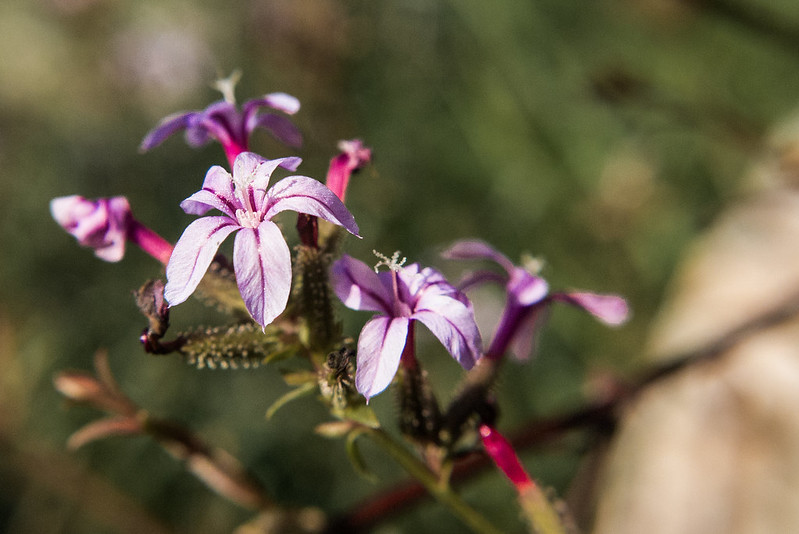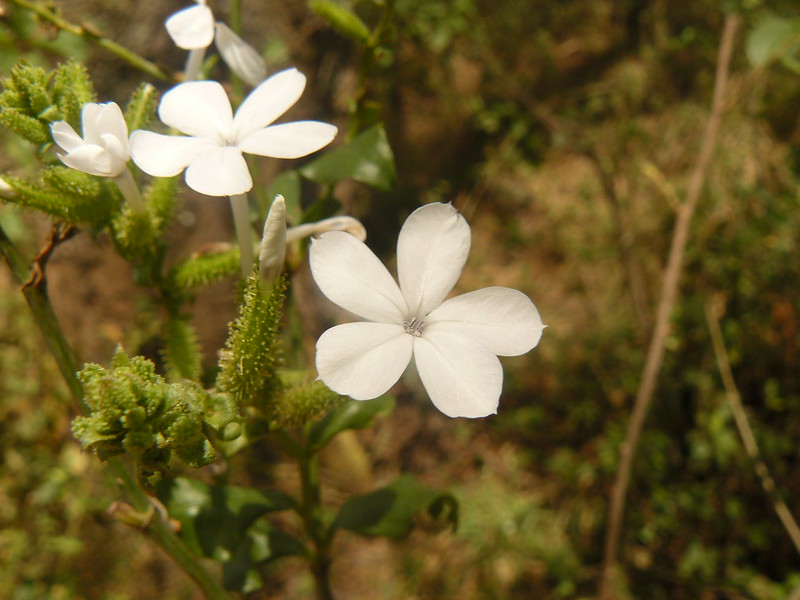
Last updated on May 21st, 2023 at 11:52 pm
Plumbago is a genus in the family Plumbaginaceae. It consists of 10 to 20 species of plants. The plumbago flower is commonly known as plumbago or leadwort.
Native to warm, temperate, and tropical regions, the plumbago flower is found in South Africa, Namibia, Central Asia, Southeast Asia, Southern Europe, and North America.
Plumbago is taken from the Latin words “plumbum,” meaning “lead,” and “agere,” meaning “to resemble.” It is believed to refer to the lead-like blue color of the flower and the lead-colored stains created by the sap when touched. The derivation of the name may also refer to the belief that the plumbago flower cures lead poisoning.
The various species of the plumbago genus include herbaceous plants and shrubs. There are both annuals and perennials in this genus. They grow up to a height of 1.6 to 6.6 feet (48.76 to 201.16 cm) tall. The leaves are soft and 0.20 to 4.72 inches (0.508 to 11.98 cm) long, with a tapered base and a hairy margin. They are arranged spirally. When the foliage matures, they are often found with a whitish residue on its underside.
Though it resembles a powdery mildew disease or chemical spray deposit, it is a naturally occurring substance from “chalk” glands in the plumbago species.
The flowers are saucer-shaped, having a tubular corolla with five petal-shaped lobes. They bloom in blue, white, purple, red, or pink color.
Around 17 species of the plumbago genus are widely accepted worldwide. Each of their growing conditions and colors varies slightly from one another.
What does the Plumbago flower symbolize?
The plumbago flower’s meaning and symbolism hold great significance. This flower symbolizes hope, good wishes, and spiritual desire.
In today’s world of chaos and stress, hope has become a man’s only solace. The plumbago flower can convey hope to someone in need of positive energy.
The plumbago flower also symbolizes spiritual desire. Growing these flowers in your backyard or gifting a bouquet to your loved ones will guide you spiritually. They will help bring prosperity, and you will feel a deeper connection with the Almighty.
All in all, the plumbago flower symbolic meanings are:
- hope
- good wishes
- spiritual desire
Meaning of the Plumbago flower colors
Blue color

This flower is the most popular species of the plumbago family, commonly known as Blue Plumbago (Plumbago auriculata). The blooms are deep blue, pale blue, or violet. This flower can be seen everywhere, from gracing the sidewalks in parks to adorning the ground of a backyard garden. It is also known as Cape Leadwort or Cape Plumbago because of its origin, Cape Town, in South Africa. This flower symbolizes tranquility, hope, and peace.
Pink color

Another popular species of the plumbago family is also known as Common Leadwort and European Plumbago (Plumbago europaea). This flower can be seen adorning the front fences and sandy beaches of Albania, Bulgaria, France, Greece, Spain, Portugal, and Romania. It blooms in dusty pink or lilac color, symbolizing spirituality, renewal, and hope.
Red color

Abundantly found in India, Indonesia, China, and Pakistan, this species is also known as Scarlet Leadwort (Plumbago indica) due to the blossoms’ bright red or deep pink color. It is also known as the Indian Leadwort, which symbolizes respect, desire, and courage.
Lilac color

This species of the plumbago family is indigenous to Mexico. It is most popularly known by its Mexican name, Cola de Iguana (Plumbago pulchella). The flowers are lilac or violet in color. They decorate the head of a thorny, tail-shaped green stem. The stem is covered with tiny red marks that closely resemble an Iguana’s tail. This flower symbolizes truth, loyalty, and spiritual desire.
White color

This species is mostly indigenous to India in Gujarat, Maharashtra, Bengal, Uttar Pradesh, and South India. It is locally known as Safed (white) Chitrak or Ceylon Leadwort (Plumbago zeylanica). Unlike the Indian Leadwort, this plant flowers small white blossoms. It is also found in the monsoon forests of Australia. This flower symbolizes reverence, humility, hope, and good wishes.
Interesting facts about the Plumbago flowers
- The name Auriculata of the species Plumbago Auriculata means pear-shaped. It refers to the shape of the leaf base.
- The powdered root of Plumbago Auriculata is a great remedy for wounds, warts, skin disorders, and headaches. It can also fight cancer.
- The Africans use the Plumbago Auriculata plant in the textile industry for dying purposes.
- The sap of the roots releases a gray-blue color which is sometimes used for tattoos.
- Children use flowers as earrings due to their sticky quality.
- The Plumbago Europaea species have antibacterial and anti-inflammatory properties. It is used in traditional Turkish medicine to treat dermatitis, acne, eczema, insect bites, infections, and other skin-related diseases.
- The root of the Plumbago Indica contains Plumbagin which cures several diseases and health problems. It is used in traditional Indian herbal medicines to cure diarrhea, headaches, tuberculosis, and rheumatism.
- The rural parts of South Asian countries apply the paste of the nectar and powder of the roots and leaves of the Plumbago Indica for relief against many ailments.
- Plumbago Indica is a poisonous plant. Expecting mothers should stay away from this plant.
- The Plumbago Pulchella has blue-red plant pigment, which is important in traditional Mexican medicine and veterinary uses.
- The root of the Plumbago Zeylanica species is used across Ayurvedic medicine. It has antibacterial, antifungal, and anti-carcinogenic properties.
How to grow Plumbago flowers
The plumbago flowers are low-maintenance and easily propagated, making them a favorite addition for sidewalks, parks, backyards, and gardens. The vivid colors of the flowers can spruce up any corner or spot in the landscape.
- Plant the plumbago well-drained soil, full of organic material with a 1/3 of each – loam, peat moss, sand – consistency.
- Choose a spot with a lot of sunlight.
- Water thoroughly after planting and allow the soil to dry before watering again.
- Fertilize the tree regularly for a strong root system and full flower heads.
How to care for Plumbago flowers
- Reduce watering to once per week when the weather cools and fall begins.
- Apply a balanced fertilizer at least once per month for the best results.
- Lightly prune to stimulate the blooming and preserve the shape.
- It is best to repot every 2 years for the blooming to stay beautiful, as it will help replenish nutrients. Follow the label instructions.
Best time to gift Plumbago flowers
The plumbago flower’s meaning is essential when gifting the flowers to someone. This flower symbolizes hope and good wishes. They make a perfect gift for close friends, family members, ailing persons, or those who have lost their loved ones. They convey hope for better times and wish luck and prosperity.
Conclusion
Plumbago is an outstanding vine; everyone admires its flowers and foliage. It is a low-maintenance shrub that adds charm to many Florida landscapes.
Its unrivaled clusters from cool blue to pure white flowers make it a favorite among classic garden picks and a perfect gift to your loved ones.
If you want to know and learn more about flowers, we at PansyMaiden can help you. Check out our fun, easy-to-read, and informative flower-related content that you will surely enjoy!
